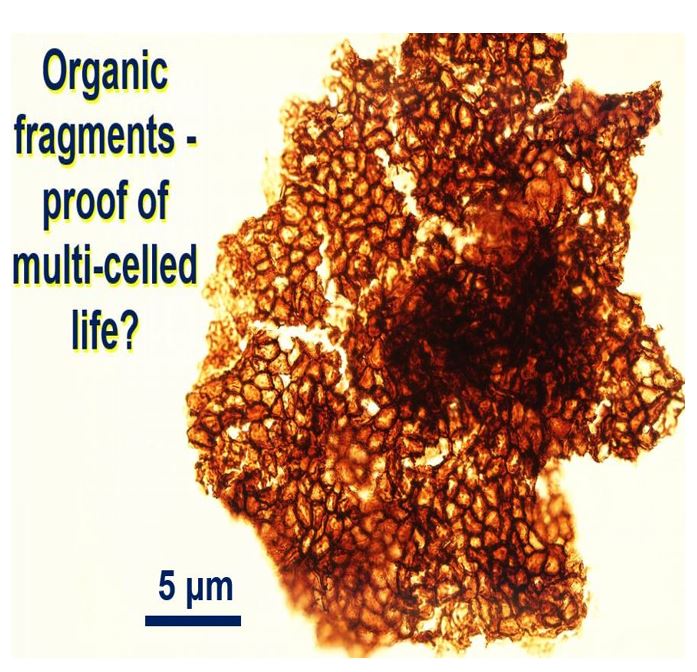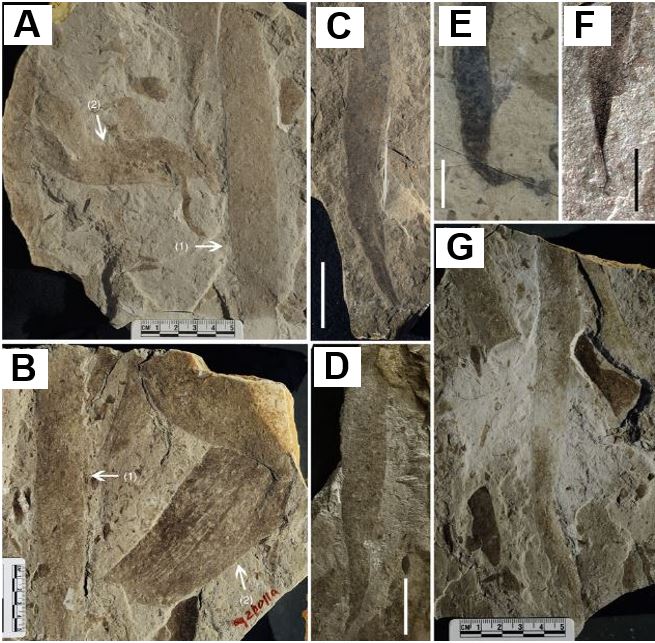Complex life on Earth started one billion years earlier than previously thought, says a group of Chinese and American scientists. According to newly-uncovered fossil evidence from China, complex life -multi-celled life – on Earth started over 1.5 billion years ago. Not all experts, however, are convinced by the findings.
After Maoyan Zhu, a professor at the Nanjing Institute of Geology and Paleontology, and colleagues published their study and findings in the prestigious journal Nature Communications, a global debate ensued. Some scientists hailed it as rock-solid evidence that complex life really did start much earlier, while others dismissed the findings completely.
After life emerged from the primordial soup – a solution rich in organic compounds from which life is believed to have originated – life remained unicellular and primitive for billions of years. However, some of those cells eventually gathered in colonies.
 Organic fragments with preserved cellular structure, which scientists say are proof that complex life on Earth started one billion years earlier than previously thought. (Image: Nature Communications)
Organic fragments with preserved cellular structure, which scientists say are proof that complex life on Earth started one billion years earlier than previously thought. (Image: Nature Communications)
After the ‘boring billion’ period, when evolution seemed to have stalled, at some point there was a giant leap towards complex organisms.
This leap eventually gave rise to all the animals and plants that have ever existed on our planet.
Scientists have long debated about exactly when multicellular eukaryotes first appeared. Eukaryotes have cells with genetic material that is organised into chromosomes in the cell nucleus – they have differentiated cells and DNA in a nucleus.
Prof. Zhu said:
“Our discovery pushes back nearly 1 billion years the appearance of macroscopic, multicellular eukaryotes compared to previous research.”
 Of the 167 fossils they were able to measure, 53 of them were of one of four shapes – an indication of complexity. (Image: Nature Communications)
Of the 167 fossils they were able to measure, 53 of them were of one of four shapes – an indication of complexity. (Image: Nature Communications)
The fossils were discovered in China’s Hebei Province’s Yanshan region, which is where Mao Zedong (Chairman Mao) and his communist army lay low during the Second World War before taking power.
Scientists unearthed 167 measurable fossils, more than fifty of them in one of four regular shapes – which suggests complexity. The largest fossil measured 12 ins by 3 ins (30 cms by 8 cms).
Prof. Zhu said that taken together the fossils represent compelling evidence for the evolution of life forms large enough to be seen with the naked eye. “This totally renews current knowledge on the early history of life,” he added.
Until this latest find, eukaryotes of comparable size had not been observed in the fossil record until approximately 600 million years ago, when a wide range of soft-bodied creatures began inhabiting our oceans.
Study sparks debate
Professor of palaeobiology at the University of Bristol in England, Phil Donoghue, was impressed with the discovery and described it as a ‘big deal’.
Prof. Donoghue said:
“They are not the oldest eukaryotes, but they are certainly the oldest demonstrably multicellular eukaryotes.”
 (A) Linear fossil. (B) Linear fossil. (C,D) Cuneate fossils. (E) Oblong fossil. (F) Cuneate fossil. (G) Linear fossil. (Image: Nature Communications)
(A) Linear fossil. (B) Linear fossil. (C,D) Cuneate fossils. (E) Oblong fossil. (F) Cuneate fossil. (G) Linear fossil. (Image: Nature Communications)
If they existed 1.56 billion years ago, it means that at that time atmospheric oxygen levels were high enough to allow for such organisms to thrive.
Senior scientist at the Department of Zoology, University of Oxford, Jonathan Antcliffe, said:
“There is nothing here to suggest that the specimens are eukaryotic, as opposed to bacterial.”
A bacterium is a unicellular organism – its cell does not have a distinct nuclei with genetic material inside.
Dr. Antcliffe says it is more likely that the recently-discovered fossils were colonies of bacterial cells, and not a single complex organism.
Real multicellular life forms display 3-D form in which only some of their cells are in direct contact with the outside.
Andrew H. Knoll, the Fisher Professor of Natural History at Harvard University, explained in an article reviewing scientific literature regarding the origins of complex life:
“[This is] critically important for function because it introduces transport problems for oxygen, nutrients, and signaling molecules [needed by the internal cell].”
In an Abstract in the journal, the researchers wrote:
“Comparisons with living thalloid organisms suggest that these organisms were photosynthetic, although their phylogenetic placement within the Eukarya remains uncertain.”
“The new fossils provide the strongest evidence yet that multicellular eukaryotes with decimetric dimensions and a regular developmental program populated the marine biosphere at least a billion years before the Cambrian Explosion.”
Citation: “Decimetre-scale multicellular eukaryotes from the 1.56-billion-year-old Gaoyuzhuang Formation in North China,” Shufen Sun, Yuangao Qu, Shixing Zhu, Maoyan Zhu, Andrew H. Knoll, Zongjun Yin, Fangchen Zhao, Min Shi & Huan Liu. Nature Communications 7, Article number: 11500. 17 May 2016. DOI:10.1038/ncomms11500.
